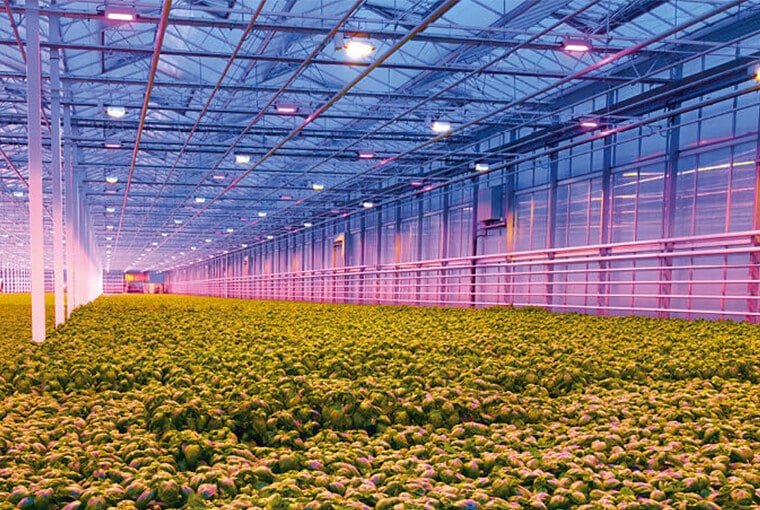Buyer guide on how to choose the best LED grow lights
Now LED has evolved to many special lighting purpose, which includes the agricultural lighting, many people begin to use LED grow light to plant some vegetables or fruits, that a training on how to choose the best LED grow lights becomes neccessary for ordinary people.
Also, LED grow lights become quite trending over the last two years in the United States because more and more States‘ law make it legal to plant cannabis or marijuana for home growing for medical or recreational use, in 2023 this year, the number reaches to 24 States that has legalized it.
Besides, more and more people become interested in gardening indoors to cultivate some vegetables(lettuces, cabbages, tomatoes, spinach, Chilli, kale, broccoli, bean, wheatgrass), herbs(mint,ginger, cannabis, marijuana, algae) and flowers(rose, orchid, gladiolus, wildflowers, succulents, citrus) for self-consumption.
Therefore, we can conclude that its popularity in the horticultural lighting, hydroponic and aeroponics lighting industry will be continued and high demand for that growing light in the future will boom for sure.
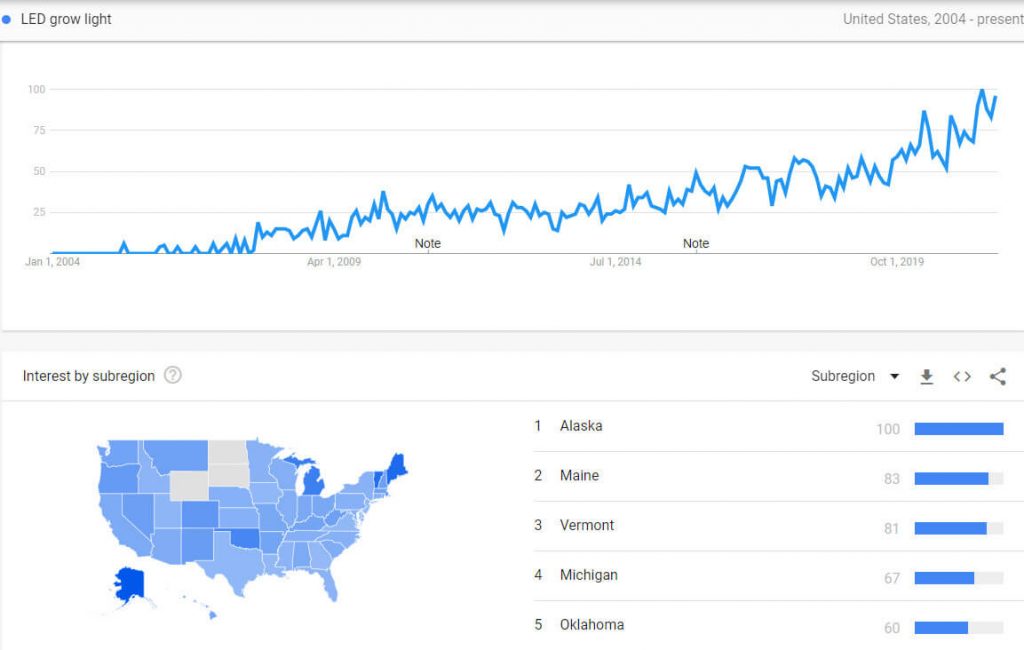
Basic knowledge of LED grow light
Why do we need LED lights to grow green-plant weeds?
In some sunshine-rich rural region, it might be not neccessary to use LED lights for plant vegetable growing such as lettuce, cabbage, tomatoes, peppers, cress, cucumbers and many more floral plant, as the sun rays have all spectrums for plant photosynthesis so that the seeds plant can bud, develop, blossom, flower, yield fruit normally.
However, in some condition, the weather is good or bad, which is out of human control. Sometimes, we might endure extreme weather, there might be insufficient sunlights and the farmer might suffer a huge economic loss during a heavy rain season, so greenhouse farming become a certain way that farmer can control the yield;
Besides of that, some farmer want to shorten the plant growing cycle, and expect an early yielding than general.
Finally, e.g. for urban region, land is a rare resource and some citizens would like to grow some green leafy plant at home but due to shortage of sunshine, but the artificial grow light makes it possible for the plant to grow healthy.
As described aboved, if the plant is not growing outside in the soil, we need to use LED plant grow light to achieve our purpose.
What factors to look at when choosing LED grow light ?
- Avoid cheap LED chips, well-known brand has long durability, cutting down future repair & maintenance cost. You can choose proper wattage for your application from 400W 600W 640W 720W 960W 1000W LED grown lights from the market.
- No flickering issue (how to judge easily: use smartphone camera to test) or produce much heat. The flicker might be unnoticeable by naked eyeballs for frequency above 100HZ but can be captured by the camera, a serious flicker issue means its driver is not good. And if the light produces too much heat or you have the light working over 12hrs per day, then you would need a strong and expensive cooling system to get the hot air out, otherwise, the plant might fall into dehydration to die, so keep on eye on the greenhouse ambience temperature.
- Know what plant to grow, and how tall the plant would get and determine the mounting height.
- Know your size of growing area and light fixtures quantity you need, then decide if go linear t8 tube grow light or bar grow light
- Easy to use and flexibility (if it is dimmable by turning a knob kit or can be programmable controlled intensity of light by phone app or the suspension kit height can be coordinated with adjustable rope according to different growth stages ). If the growing area is so extensive, you don’t want to pull power lines inside and require one-time control for all lights, so a linkable connector is better to have.

Frequently Asked Questions about LED grow lights
What are LED grow light ?
LED grow light is a kind of artificial light fixtures that use the latest LED diode technology to create full spectrum wavelength of light to help plant photosynthesis without the sunlight for indoor plants.
What is the benefit of LED grow light VS HID and fluorescent grow light ?
HID stands for high intensity discharge lamp, which include metal halide, high pressure sodium ,mercury vapor.
These lamps contain a quartz tube filled with gas and electrodes on either end. An arc of electricity is sparked between two electrodes inside the tube to generate visible light.
Metal halide grow light and high pressure sodium grow light have different light spectrum patterns, so usually, growers would have mixed use for their purposes, e.g. for vegging and for flowering
MH produced blueish light spectrum(over 5500K), has little red light, better to use for lettuce, herbs vegetation or early vegetative stage of flowering plant, while HPS’ hue is yellowish-orange with little blue light(under 3500K), better for tomatoes, orchids, cannabis plant that can flower.
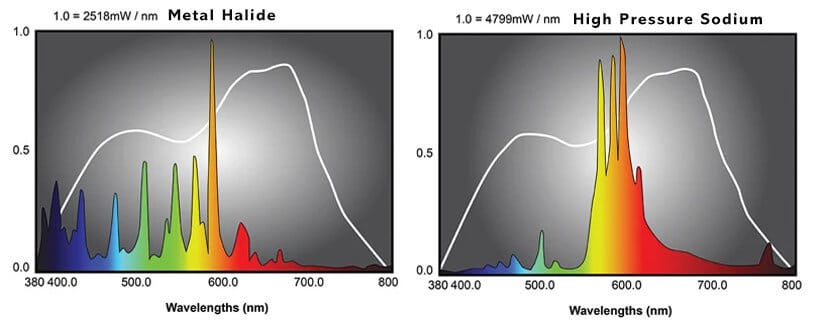
In other words, there is no better choice than the other, the decision to make which type of grow light to go is based on what you grow.
However, if you must say which one is better than the others, it is LED grow light that can emit full spectrum wavelength that the plant need for photosynthesis, It has red light, blue light, and all other light spectrums just like the sunlight.
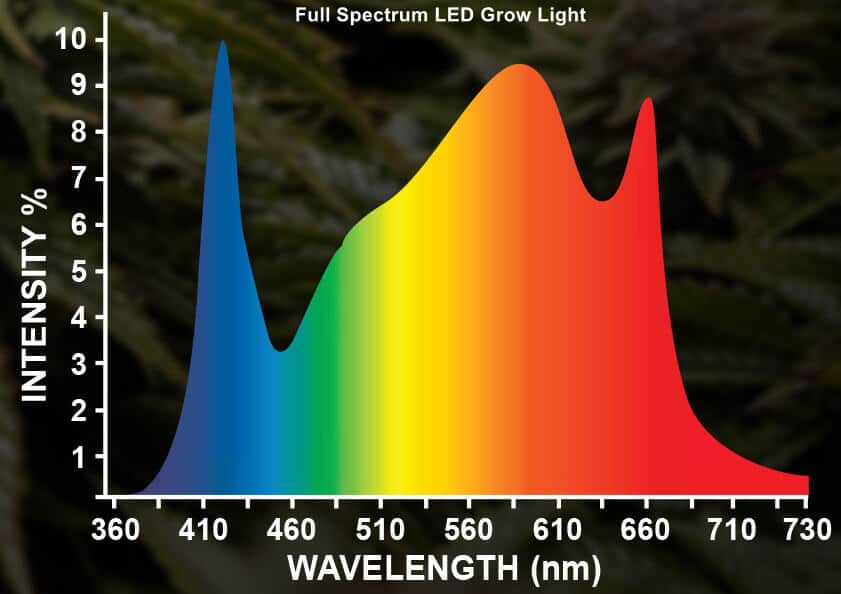
LED plant grow light has over 100,000hrs lifespan, five times longer as opposed to metal halide (ceramic metal halide), high pressure sodium & fluorescent grow light 20,000hrs lifespan, with higher efficacy and less heat produced, no high power cooling system needed, you can save a lot of electricity bill all the year around, plus cutting down the maintenance cost & labor force fee.
Another edge is that the LED grow lighting has less lumen decay than MH or CMH, HPS, t5 or t8 fluorescent grow lights, it is still more powerful to thrive the plant when the rest HID or fluroescent grow lights are dead.
The biggest advantage of LED grow light fixture over the old MH HPS fluoresccent is that it offers more controlability. It can be dimmable by a PWM dimmer switch or it can be connected in a row with lead plug, adjusted brightness and light spectrum by smartphone app at one time in greenhouse or big hydroponic room.
Therefore, it is time to get rid of these outdated grow light fixtures and adhere to the most efficient LED grow lamp for growers in horticulture lighting.
What kelvin to use for indoor grow light ?
First, white light is better than any other single light color because it has broad wavelength, which is very crutial for plant photosynthesis.
Second, for white light, it varies from the plant you are growing, some plant is low-light plant, they only need a small fraction of sunlights and they can grow healthy, too much sunlight means harm to them.
While some is high-light plant, short time of sunshine shower might stop them from growing, eventualy lead to wither and fall.
Plant absorb the light photons and convert the light energy into chemical energy like sugar, through a cell structure called Chlorophyll, but different plants have different preference for the light wavelength, some like red light more like the tomotoes, some like blue light more like the lettuce, some may need all light wavelengths. But most often, it varies for different phases of growing cycle.
Therefore, it is really hard to say what kelvin of LED to use for LED plant lighting.
However, there is a simple rule of thumb that we can use a full spectrum LED grow light for horticulture & hydroponic lighting, no matter it is in greenhouse or indoors or basement.
Full spectrum light usually has three kinds of LEDs on PCB board.
Most is the 4000K LED chips, it is visible light having a broad spectrum(380nm-750nm), and among these 4000K natural white chips soldering some monochrome red light(600-700 nanometers) chips and blue light(400-500 nanometers) chips as suppliment, because plant cells absorb red and blue light much more than other color light
In this way, when you turn on the grow light fixtures, all light spectrum can spread evenly on the plant.
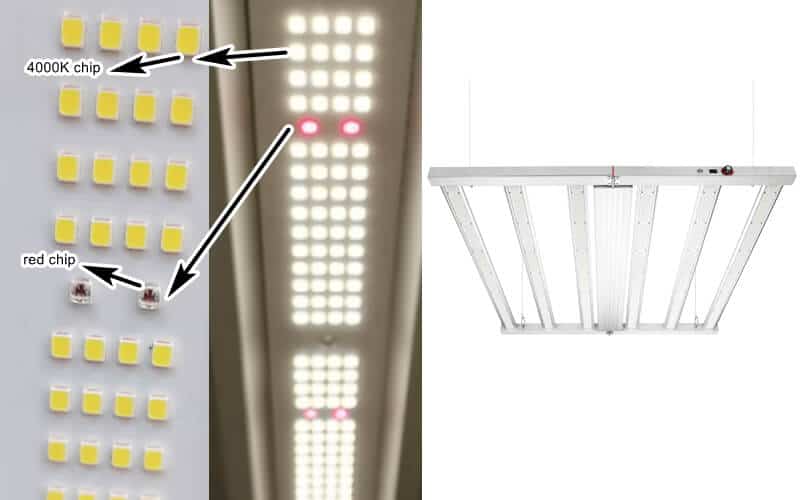
What is PAR value ? And how to measure what is the best LED grow lights ?
PAR is abbreviation of Photosynthetically Active Radiation, a portion of light spectrum utilized by plants for photosynthesis between 400nm-700nm, during this process, the plant give off oxygen.
And light is microscopically known as photons in quantum science, value meassured by Photosynthetic Photon Flux Density (PPFD), unit is μmol/㎡/s.
The PPFD value actually be different for different spaces, the value in the center is usually bigger than that in the corner.
If you know the covering area of the grow light bulb, you will get the total value PPF= PPFD x area, its unit is μmol/s.
Here, PPFD is a little like the output intensity lux(=lm/m²) of the custom LED light fixture, but please keep in mind:
LED grow light efficiency will never be measured by lumens or lux.
PPF will determine how many units of LED indoor grow light shall be used for the growing spaces.
e.g. if you know one 640W LED grow light can fully cover 5mx5m at a certain mounting height(e.g. mounting 2m), then you will probably shall easily calculate 200m² how many fixtures you need for this area.
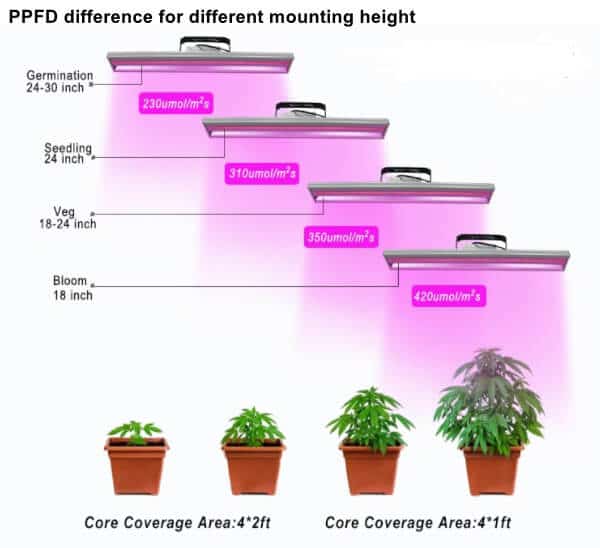
Then, how to evaluate which LED grow light is better than the other ?
A higher PPF doesn’t mean it is a better bulb, we should look at its wattage consumption also.
The value of division of PPF/watt is what we called PPE (Photosynthetic Photon Efficacy), unit is μmol/J, which is a measurement to see it is more efficient than others.
The higher the PPE value, the better, meaning the light can convert more electricity into more efficient light energy/photons to the plants.
What is the watt equivalent of LED VS Fluorescent, MH HPS grow light ?
As stated earlier before, LED grow light performance is not measured by its wattage but its PPFD that is helpful for plant growth, therefore, it is not so good to say the wattage equivalent of LED to the traditional HID & fluorescent grow bulbs.
We just give you a rough range for your reference, it is not accurate.
- 200W-250W LED = 400W HPS MH equal, 320W-450W 4′ T5 fluorescent tube
- 400W LED = 600W HPS MH equal, 600W-800W 4′ T5 fluoresent tube
- 600W-660W LED = 1000W SE HPS, 1200W SE MH, 630W-700W CMH
- 700W-720W LED = 1000W DE HPS, 1200W DE MH equal
- 900W-960W LED = 1200W-1500W DE HPS MH equal
Note:
SE HPS = single ended high pressure sodium for small residential growers. (lifespan 9Months-12Months)
DE HPS = double ended high pressure sodium for large commercial growers. (lifespan 18Months-24Months)
SE MH = single ended metal halide for small residential growers. (lifespan 9Months-12Months)
DE MH = double ended metal halide for large commercial growers. (lifespan 18Months-24Months)
CMH = ceramic metal halide ( better light spectrum than MH and laster longer)
However, the best way to find out the equivalent of the LED VS HID is to look at its PAR output PPFD.
How to do that ?
You need to get a light meter that can read the PAR number at the center of the illumination area, whereas probe of the meter holding height is just the best for the plant growing.
e.g. if you are running a 1000W HPS grow lamp, mounting height is 24″, and the PAR number is 420μmol/㎡.s.
Then record that number and ask the LED grow light supplier for the PPFD distribution report, then you can get a number for the same height 24″.
If the LED number is a little larger, or close to the HPS number, we can be 100% sure that it is a perfect equivalent.
What is the best LED grow light spectrum for cannabis ?
Remember it is that red, blue spectrum, UV and IR that also count when you grow cannabis crop, better to go full spectrum LED grow light. UV is ultraviolet wavelength from 10nm-400nm, IR is short for Infrared radiation from 780nm-1mm.
How long Should I light up the plant ?
Just mentioned at the beginning, all plants have their own features and reaction to the sunlight, some is sun-loving plant, some is shade-loving plant, the rest is neutral plant, therefore, the first step is to figure out which category it belongs to.
Below is our tips for different species.
For sun-loving plant, it is better to expose it over 12 hrs of light per day, then it can normally go to its flowering and fruiting stages.
For shade-loving plant, less than 6 hours of light is recommended.
While for the rest neutral species, 8-10hrs of light per day is alright.
If you still have any question on LED indoor grow lights or want to consult light fixtures layout before buying LED grow light, please feel free to contact Chiuer Lighting via email: [email protected] or call us: +1(806) 680-3682


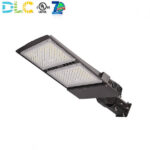 LED Shoebox Light
LED Shoebox Light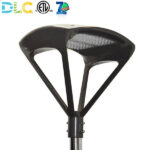 LED Post Top Light
LED Post Top Light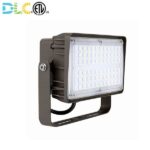 LED Flood Light
LED Flood Light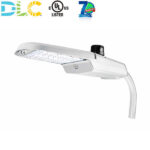 LED Street Light
LED Street Light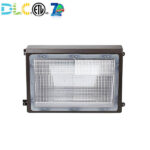 LED Wall Pack
LED Wall Pack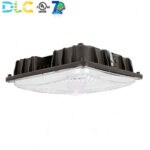 LED Canopy Light
LED Canopy Light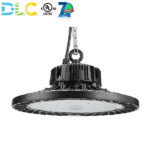 LED High Bay
LED High Bay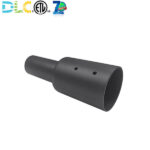 Accessory
Accessory